In my last post we visited the Central Park Zoo, circa 1931, and found a collection of animals displayed as curiosities in barren enclosures that in no way resembled natural habitats.

It’s hard to say if those creatures were better or worse off than their cousins at the American Museum of Natural History, a short walk across the park to the northwest. Unlike the zoo, the tigers and rhinos at the museum were displayed in naturalistic, almost dreamlike settings. But then again they were dead; indeed, all that remained of them were their skins, skillfully fitted over skeletons of wood and clay.

E.B. White stopped by the famed museum to take a look at its new Asiatic Hall, and filed this report for “The Talk of the Town.”
The animals pictured below came from a couple of British big game hunters, gathered during expeditions in the 1910s and 1920s…




I am delighted that the AMNH (which I visited in December as an avid fan of diorama art) preserves these exhibits, which not only display animals—many now endangered—but also the artistry of painters, sculptors and taxidermists from a century ago. Sadly, many museums are scrapping these cultural treasures and replacing them with gaudy, interactive displays and video screens. An article in Newsweek (“Museum Dioramas Are as Endangered as the Animals They Contain,” Aug. 2, 2015) notes that around 2008 “the Smithsonian’s National Museum of Natural History in Washington, D.C., closed two diorama halls and reopened them with video screens, interactive features and stand-alone specimens where the dioramas had been.” In other words, the specimens were removed from naturalistic scenes and displayed as stand-alone curiosities, rather like those poor animals in the Central Park Zoo of yesteryear.
* * *
Everyday Icons
Gilbert Seldes profiled industrial designer Henry Dreyfuss (1904–1972), who along with contemporaries Raymond Loewy and Norman Bel Geddes was among celebrity designers of the midcentury. Like Bel Geddes, Dreyfuss was a well-known Broadway set designer who would go on to become an industrial designer in the era of streamlining. But unlike Loewy and Bel Geddes, Dreyfuss went well beyond mere styling, taking a practical, scientific approach to problems that would not only make products better looking, but also safer and more comfortable to use. An excerpt:


* * *
Body-Building Barnum
Another well-known figure of the 1930s was Bernarr Macfadden (1868–1955), an early proponent of physical culture who would prefigure such notables as Charles Atlas, Jack LaLanne, and Arnold Schwarzenegger. But none of them were quite like McFadden, who also created a pulp publishing empire (among his magazines: Liberty, True Detective, True Story, True Romances, Photoplay and the notorious tabloid newspaper The New York Evening Graphic).

Macfadden also established numerous “healthatoriums” across the East and Midwest, including (in 1931) his latest venture, the Physical Culture Hotel near Dansville, New York. E.B. White explained, in his “Notes and Comment”…


* * *
For the Birds
When I came across “Farewell to Birds,” on page 17, I thought for a moment it was one of James Thurber’s animal parodies (there was even a Thurber cartoon at the bottom of the page), but then I noticed our writer was Will Cuppy, (1884-1949) who wrote in the Thurber vein (Cuppy was ten years Thurber’s senior) and like Thurber, was a bit of a curmudgeon. From 1931 until his death Cuppy wrote satirical pieces for The New Yorker that were later collected into books (also like Thurber). Here is an excerpt from “Farewell to Birds.”

* * *
Puttin’ on the Ritz
Lois Long, newly divorced from cartoonist Peter Arno, concluded her fashion column (“On and Off the Avenue”) by telling readers about her “swell new hairdo”…
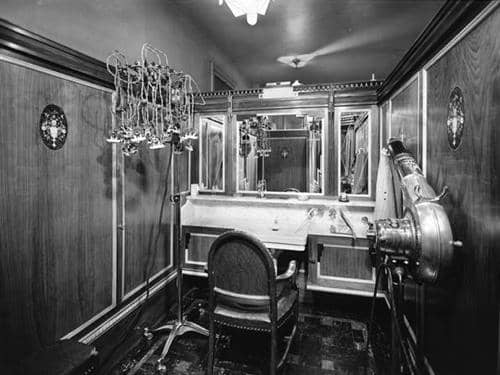
* * *
Your Majesty
Speaking of new looks, Central Park West was boasting the addition of a new “skyscraper apartment building” called the Majestic. “The Sky Line” reported:

Another building making its mark was the Parc Vendôme on West 57th, offering more than 600 apartments with annual rents ranging from $1,100 to $6,600. Condos in the same building today range from $495,000 to $5,495,000.

From Our Advertisers
Henry Mandel, one of New York City’s most ambitious developers in the 1920s and early 30s, touted the Parc Vendôme in this advertisement…
…I wonder if Lois Long (see above) got one of these “dos” at the Ritz…I love the snob appeal of this ad — “The New Paris Way of Doing Your Hair”…
…which seemed to work…here is a random sample of Hollywood stars in 1931, all wearing the look…

…other ads appealing to the Continental lifestyle…a very understated yet elegant ad for Guerlain lipstick, and Nellie Harrington-Levine gave us a disinterested deb sporting “the wave,” a cigarette and a velvet dress…
…and Pond’s continued its parade of rich society women to sell its cold cream…here we are presented with “Mrs. Morgan Belmont,” aka Margaret Frances Andrews (1894–1945), a Newport socialite and prize-winning show dog breeder…
Andrews didn’t limit herself to cold cream, here appearing in a 1927 ad for Simmons mattresses…
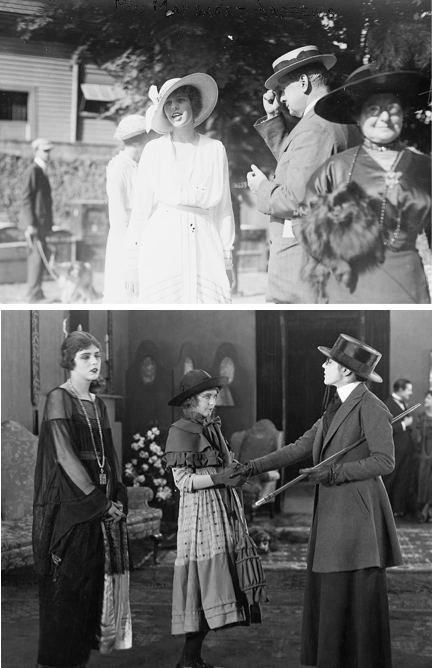
…and we move on to this sad little ad from the back pages, featuring something called “Peeko,” which apparently mimicked the flavors of Rye, Gin and Rum…it must have tasted awful…
…our cartoons feature Perry Barlow, and I can’t quite tell if this guy is drinking a soda or some bootleg gin, which was often sold at select gas stations…
…a two-page sequence from Gardner Rea…
…Otto Soglow went fishing…
…and commiserated with a couple of unemployed guys whose plight is ignored by the celebrity-obsessed media…
…Alan Dunn hit the lecture circuit…
…Kemp Starrett sketched some wink-wink, nudge-nudge at the men’s store…
…and we close with James Thurber, and the trials of our elders…
Next Time: Bonfire of the Vanities…

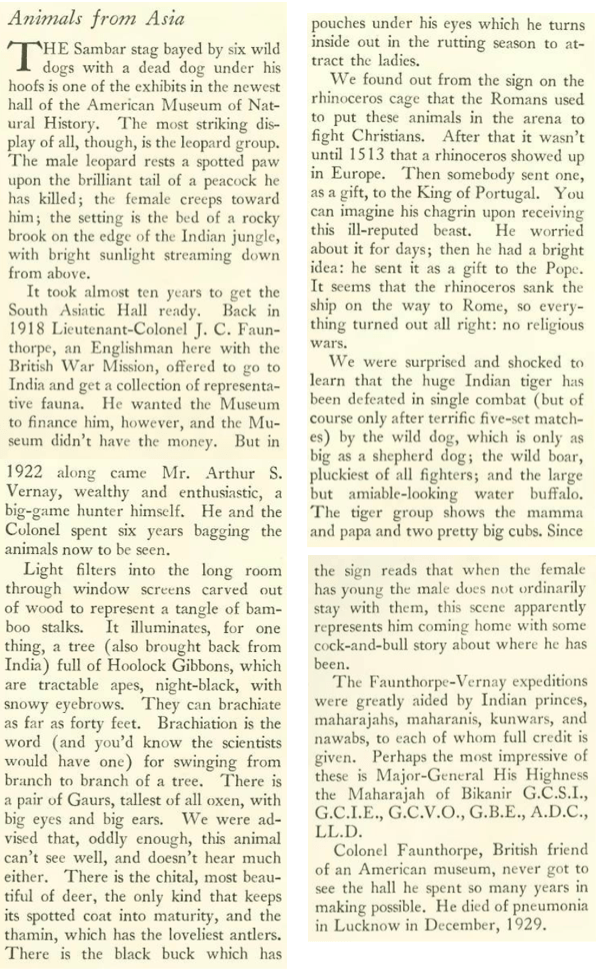

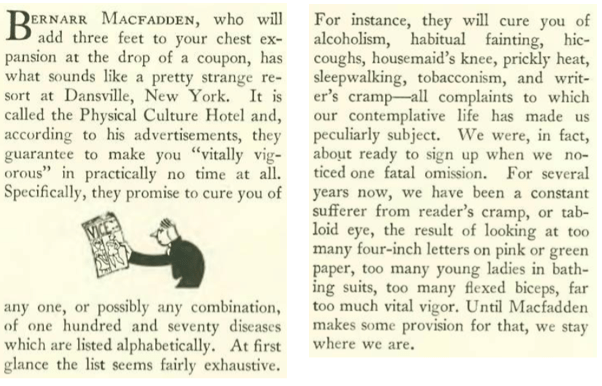








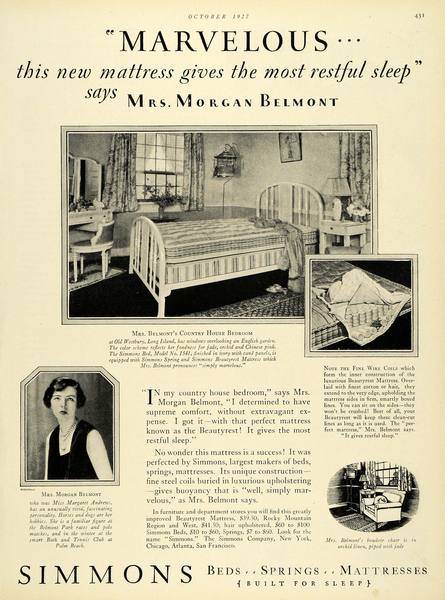

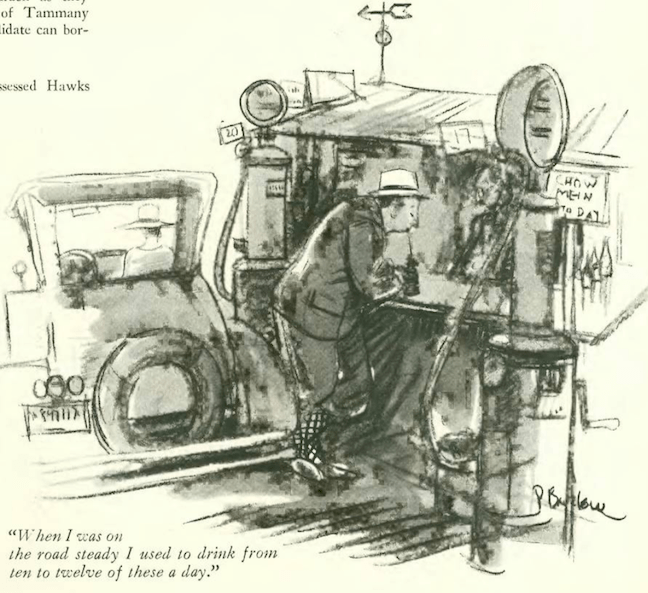

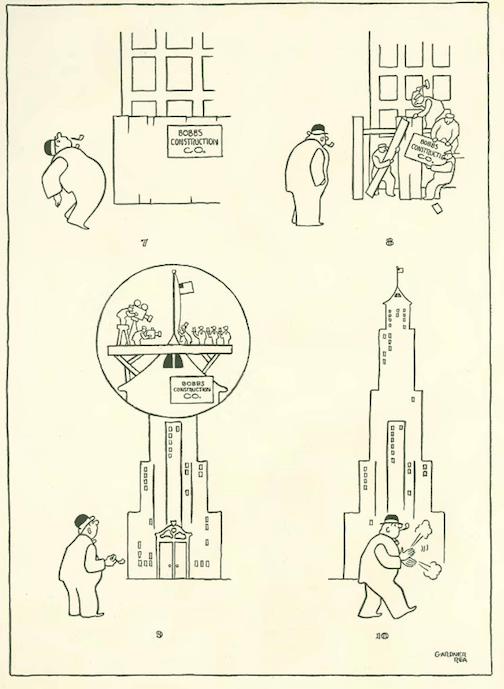






All my snapshots taken in the ’70s by the sx-70 are now all deteriorating.The colors are bleeding into the white border,there are cracks and crazing ever which way
LikeLike
So are mine…it’s like the photo Michael J. Fox carries in “Back to the Future”…I feel like I am fading away!
LikeLike